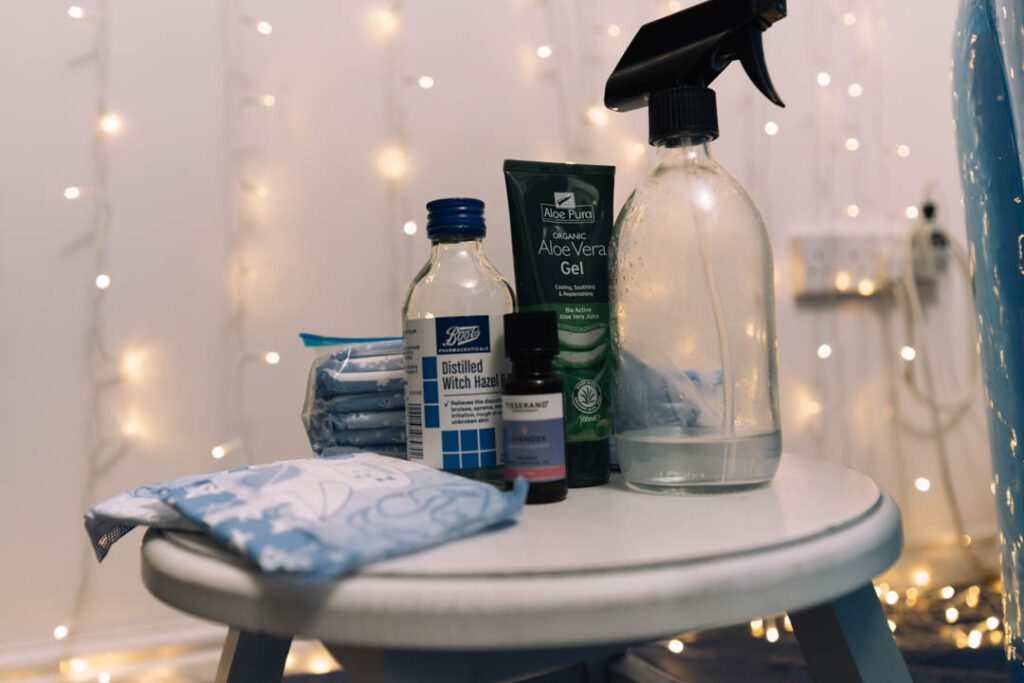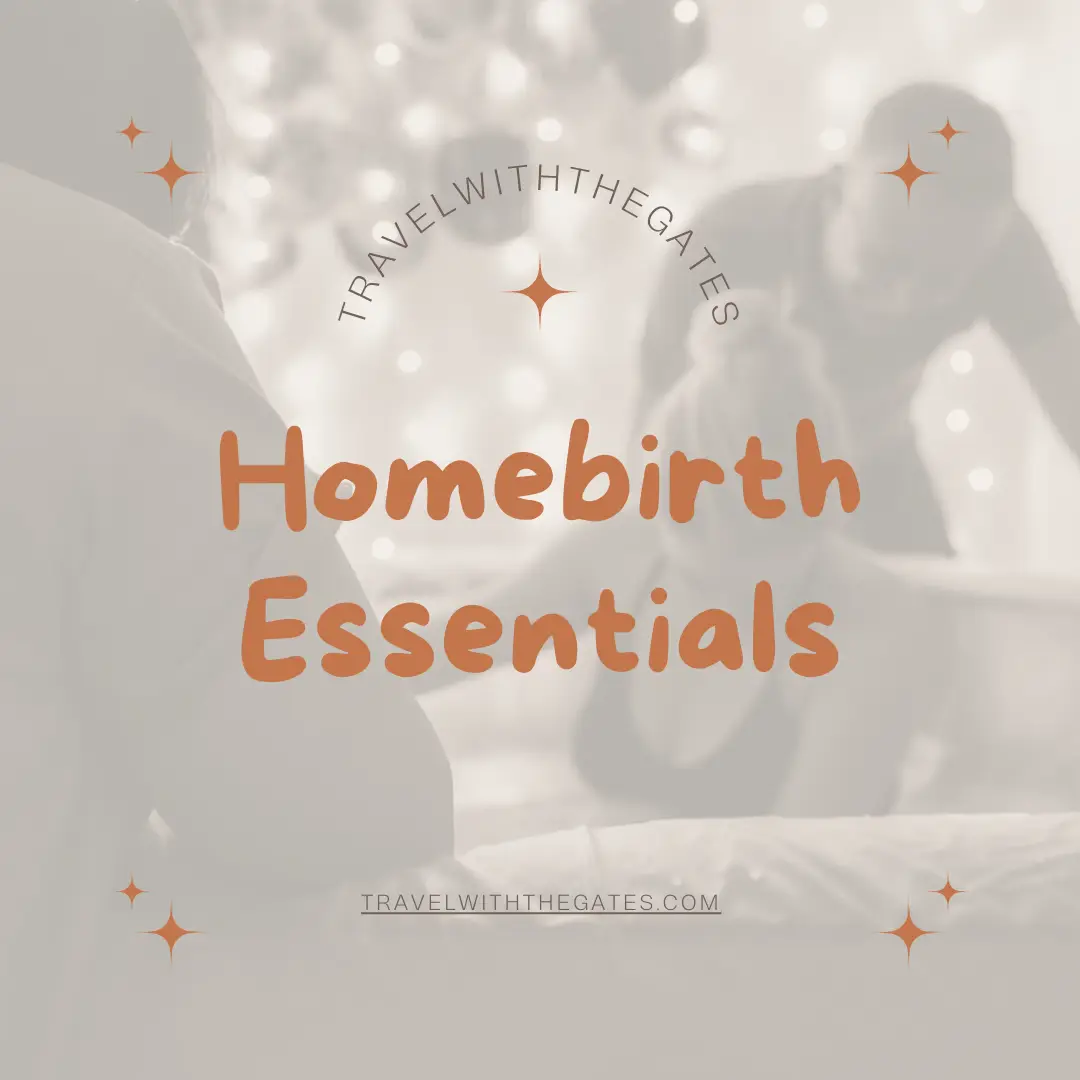How to Make DIY Padsicles for Postpartum Recovery
A Step-by-Step Guide to Creating Cooling Relief for Your Postpartum Journey

Introduction
Postpartum recovery is a journey of healing, and while it’s a time of immense joy, it can also be physically challenging. One of the best-kept secrets to easing discomfort and speeding up recovery is the humble padsicle. These frozen, soothing pads can be a game-changer, providing much-needed relief for new moms.
When I was preparing for the birth of my first child, I had no idea what postpartum recovery, including the need for the best postpartum pads, would be like. A friend suggested I learn how to make padsicles, and I’m so grateful I did. They were a lifesaver during those first few weeks, offering excellent, soothing relief when I needed it most. I can’t recommend them enough to other moms preparing for their postpartum journey.
In this post, I will walk you through everything you need to know about DIY padsicles for postpartum: what they are, why they’re beneficial, and most importantly, how you can easily make them at home. By the end, you’ll be equipped to create your own DIY padsicles and take one step closer to a more comfortable postpartum recovery.

What Are Padsicles?
Padsicles are essentially maxi pads that have been treated with healing ingredients and then frozen. They serve as a cold compress to soothe the perineal area after birth, helping to relieve postpartum pain, reduce swelling, and promote healing.
Benefits:
- Pain Relief: The cold from the frozen pad helps numb the area and reduce pain. They also help relieve pain and encourage healing.
- Reduces Swelling: The soothing ingredients can help minimize swelling and inflammation.
- Promotes Healing: Aloe vera and witch hazel, and other natural ingredients have healing properties that can speed up the recovery process.
- Convenient and Easy to Use: Padsicles are ready to use whenever you need them, providing instant relief.
Why DIY?
Making your own padsicles allows you to customize them to your needs and preferences. You can choose high-quality ingredients, avoid unnecessary chemicals, and even add your favorite essential oils for added benefits. Plus, DIY padsicles are the best postpartum help, more cost-effective than purchasing pre-made versions, and surprisingly easy to make!
Ingredients and Supplies Needed
List of Supplies:
- Maxi Pads: Choose large, unscented maxi pads that provide good coverage.
- Alcohol Free Witch Hazel: Use alcohol-free witch hazel, as it’s gentler on sensitive skin and helps reduce inflammation. Also, witch hazel can reduce swelling.
- Aloe Vera Gel: Opt for pure aloe vera gel without added chemicals.
- Lavender Essential Oil (Optional): Lavender oil has calming properties but is optional if you prefer unscented padsicles.
- Spray Bottle: Mix witch hazel and essential oil for easy application.
- Ziplock Bags or Parchment Paper: This is for storing your padsicles in the freezer.
Where to Find Them:
You can find these supplies at most drugstores, health food stores, or online. For the best deals, consider purchasing in bulk, especially if you plan to make a large batch of padsicles.
Step-by-Step Guide to Making Padsicles
Sometime during the last month of pregnancy, it’s a good idea to make a bunch of padsicles at home. These postpartum frozen pads, made by partially unwrapping a few maternity pads or sanitary napkins, can help relieve inflammation and soothe pain after birth. There’s no rule that says you have to make a huge supply, but having a few ready in the freezer will become your best friend when dealing with postpartum pain and swelling. To create the perfect padsicle recipe, start by spraying alcohol-free witch hazel onto absorbent pads for postpartum use. These DIY postpartum frozen pads are essential for healing after a vaginal birth, helping to relieve inflammation and deal with postpartum pain. Remember, the best time to build your supply is before the heavy postpartum bleeding begins, ensuring you’re ready to use them when you need cooling and soothing.
- Prepare the Pads:
Start by carefully opening the maxi pads, but don’t detach the adhesive backing. Lay them flat on a clean surface. - Mix Witch Hazel and Essential Oil:
If you’re using essential oil, add a few drops of lavender essential oil to the witch hazel in a spray bottle. Shake well to ensure the essential oil is evenly distributed. - Apply the Witch Hazel Mixture:
Spray the pads with a generous amount of the witch hazel and the drops of lavender oil onto the length of the pads, ensuring even coverage, particularly in the areas that will have the most contact with your body. - Add Aloe Vera:
Squeeze a thin layer of aloe vera gel over the witch hazel. You don’t need a lot—just enough to create a smooth layer. - Wrap and Freeze:
Fold the pads back up, keeping them in their original shape. Place them in ziplock bags or wrap them in parchment paper, then store them in the freezer for at least 1-2 hours before use. Padsicles can be stored for several weeks.
How to Use Padsicles
- When to Use:
Padsicles can be used immediately after vaginal birth and during the first few weeks of postpartum recovery, particularly when swelling and discomfort are most pronounced. - How to Use:
Remove a padsicle from the freezer and allow it to thaw for a few minutes. Unwrap and place it inside your underwear to relieve pain (like a regular pad). - Frequency:
You can use padsicles as often as needed, typically every few hours during the first few days postpartum. Change them regularly, at least every 2-4 hours, to maintain hygiene and maximize comfort.

Download the FREE printable diy padsicles recipe card!
Click on the button below…
Additional Tips and Considerations
- Customize Your Padsicles:
To enhance their soothing properties, you can add other healing ingredients, like brewed and cooled chamomile tea or calendula oil. Always test any new ingredients on a small patch of skin first. - Storage Tips:
Store your padsicles in an airtight container or ziplock bag to prevent them from absorbing odors from the freezer. - Safety Precautions:
If you experience irritation or discomfort, discontinue use and consult your healthcare provider. Avoid using padsicles for longer than necessary, as prolonged exposure to moisture can lead to skin irritation.
Common Mistakes to Avoid
DIY Padsicle Pitfalls:
Making and using padsicles is straightforward, but there are a few common mistakes to avoid:
- Using Too Much Witch Hazel:
Apply just enough witch hazel to lightly cover the pad. Oversaturating can make the pads messy and uncomfortable. - Overdoing Essential Oils:
When mixing with witch hazel, use only 2-3 drops per pad. Essential oils in high concentrations can irritate sensitive postpartum skin. - Not Allowing the Pad to Thaw Slightly:
Allow the pad to thaw for a minute or two before applying to avoid an intense, uncomfortable cold. - Improper Storage:
Store padsicles in an airtight container or ziplock bag to maintain moisture and prevent freezer burn. - Using Scented Pads:
Always use unscented maxi pads to avoid irritation from chemicals and fragrances.
Alternative Cooling Options
Other Cooling Methods:
If making padsicles isn’t for you, here are some alternative cooling methods:
- Ice Packs:
Wrap an ice pack in a soft cloth and apply it to the perineal area for 15 minutes. - Cold Compresses:
Chill a washcloth in the fridge or soak it in cold water, wring out excess water, and apply it to the affected area. - Sitz areas:
A sitz bath involves soaking the perineal area in warm and cool water. If desired, you can add Epsom salts or a mild herbal solution. - Frozen Peas or Corn:
Use a bag of frozen peas or corn wrapped in a soft towel as a makeshift cold compress. - Cooling Gels or Sprays:
Apply over-the-counter cooling gels or sprays according to the product’s instructions.
Related Postpartum Care Tips
While these postpartum pads are helpful, here are additional tips to support your recovery journey:
- How to Care for Perineal Tears or Stitches:
- Keep the area Clean: After a bathroom visit, use a peri bottle filled with warm water to gently cleanse the area. Pat dry with a soft towel.
- Use Sitz Baths: Soak in a shallow bath of warm water for 15-20 minutes a few times a day.
- Avoid Straining: Stay hydrated, eat a fiber-rich diet, and consider stool softeners if recommended.
- Wear Loose, Comfortable Clothing: Opt for loose, breathable fabrics to avoid irritating the stitches.
- Tips for Breastfeeding Comfort:
- Proper Latch: Ensure a proper latch to prevent nipple pain. If needed, seek help from a lactation consultant.
- Nipple Care: Apply nipple cream or breast milk to soothe and heal cracked nipples.
- Use Nursing Pads: Opt for soft, breathable pads and change them frequently.
- Stay Hydrated: Drink plenty of water to support milk production.
- The Importance of Hydration and Nutrition in Postpartum Recovery:
- Stay Hydrated: Aim for at least 8-10 glasses of water daily.
- Balanced Diet: Focus on a nutrient-rich diet with plenty of fruits, vegetables, and lean proteins.
- Frequent, Small Meals: To support your recovery after giving birth, opt for easy-to-prepare, nutrient-dense snacks and meals.
- Consider Supplements: Continue taking prenatal vitamins or other supplements as recommended.
- The Role of Pelvic Floor Exercises:
- Kegel Exercises: Strengthen your pelvic floor muscles with Kegels, starting slowly and gradually increasing intensity.
- Breathing Techniques: Practice deep breathing to engage and strengthen the pelvic floor muscles.
- Posture and Movement: Maintain proper alignment to reduce strain on your pelvic floor.
- Consult a Physical Therapist: If you experience significant pelvic pain, consult a pelvic floor physical therapist.
Links to Further Reading or Resources
Further Reading:
- The Benefits of Witch Hazel for Postpartum Care:
Witch Hazel and Its Medicinal Uses – Explore the anti-inflammatory and astringent properties of witch hazel. - Aloe Vera for Skin Healing:
The Role of Aloe Vera in Healing Skin Irritations – Learn how aloe vera promotes skin healing. - Comprehensive Guide to Postpartum Recovery:
What to Expect During Postpartum Recovery – An overview of physical and emotional recovery after childbirth.
Postpartum Care Products:
- Peri Bottles:
Frida Mom Upside Down Peri Bottle – An ergonomically designed peri bottle for easy cleansing. - Sitz Baths:
Carex Sitz Bath – A simple, effective way to soothe perineal pain. - Postpartum Herbal Teas:
Earth Mama Organic Monthly Comfort Tea – A herbal tea blend for postpartum recovery. - Perineal Cooling Pads:
Frida Mom Instant Ice Maxi Pads – Pre-made cooling pads for immediate relief.
A Section on Emotional Support
Mental and Emotional Recovery:
Postpartum recovery isn’t just about physical healing; your mental and emotional well-being is equally important. The transition to motherhood can bring a mix of emotions, from joy and love to anxiety and overwhelm. It’s important to acknowledge these feelings and seek support when needed.
- The Importance of Emotional Support:
Hormonal changes, sleep deprivation, and the demands of caring for a newborn can all contribute to emotional ups and downs. Having a support system in place—whether it’s family, friends, or professionals—can help you navigate these challenges. Also, having a trusted friend when dealing with postpartum challenges. by your side can make a world of difference. - Online Support Groups:
- Postpartum Support International: Offers various online support groups where you can connect with other moms.
- Peanut App: A platform designed to connect moms for support, advice, and friendship.
- Postpartum Doulas:
A postpartum doula can provide in-home support during the first few weeks after childbirth, helping with baby care, household tasks, and emotional support.- Find a Doula: DONA International is an excellent resource for finding certified postpartum doulas in your area.
- Mentaareaalth Professionals:
If you’re struggling with postpartum depression, anxiety, or other mental health issues, seeking help from a mental health professional who specializes in postpartum care can make a significant difference.- Resources: Postpartum Progress offers information and resources for mothers experiencing postpartum depression and anxiety.
FAQ Section
Q: How long can I store padsicles in the freezer?
A: Padsicles can be stored in the freezer for up to 3-4 months. To keep them fresh, make sure they are well-wrapped or stored in an airtight container.
Q: Can I use other essential oils besides lavender?
A: Yes, you can use other essential oils, such as tea tree oil (for its antibacterial properties) or chamomile oil (for its calming effects). However, always check for any skin sensitivities before using a new essential oil.
Q: What if I don’t have witch hazel?
A: If you don’t have witch hazel, you can still make padsicles with just aloe vera gel and essential oils. Witch hazel is beneficial, but it’s not absolutely necessary.
Q: How long does postpartum recovery typically take?
A: Postpartum recovery varies for every woman, but generally, it takes about 6-8 weeks for most of the physical recovery after giving birth. However, full recovery, including emotional and mental health, can take longer, sometimes up to a year or more. Listen to your body and take the time you need to heal.
Q: When should I see a doctor for postpartum pain?
A: It’s normal to experience some pain and discomfort after childbirth, but you should contact your doctor if the pain is severe if you have a fever if you notice foul-smelling discharge, or if the pain persists beyond a few weeks.
Q: How can I manage postpartum emotions?
A: Postpartum emotions can range from joy to anxiety and even sadness. It’s important to acknowledge your feelings and seek support. If you experience symptoms of postpartum depression, such as persistent sadness, hopelessness, or difficulty bonding with your baby, seek professional help immediately.
Q: What should I eat during postpartum recovery?
A: Focus on a balanced diet rich in nutrients that support healing and energy. Incorporate plenty of fruits, vegetables, whole grains, and proteins. Omega-3 fatty acids, found in flaxseed, can also support mood and brain health. Stay hydrated, and consider continuing your prenatal vitamins.
Q: When can I start exercising after childbirth?
A: Light activity, like walking, can usually be started within a few days after delivery, but more intense exercise should be postponed until after your 6-week postpartum checkup or when your doctor gives you the go-ahead. Start with gentle pelvic floor exercises, like Kegels, to strengthen your core before gradually increasing your activity level.
Q: How can I improve sleep during postpartum recovery?
A: Sleep can be challenging with a newborn, but try to rest when your baby sleeps, and ask for help from your partner or family members. Create a comfortable sleep environment, and consider co-sleeping arrangements that work for your family to maximize rest.
Conclusion
DIY padsicles are a simple, affordable, and incredibly effective way to ease discomfort and promote healing during postpartum recovery. Following the steps outlined in this post, you can make your own padsicles and be prepared for the weeks ahead.
Every postpartum experience is unique, and it is important to take care of yourself during this time. Padsicles are just one way to make the recovery process easier and more comfortable.
I’d love to hear from you! If you try making your own padsicles, please share your experience in the comments below. Don’t forget to subscribe to my blog for more tips on postpartum care, and follow me on social media for daily inspiration and support.
Check out my other related blog posts.






